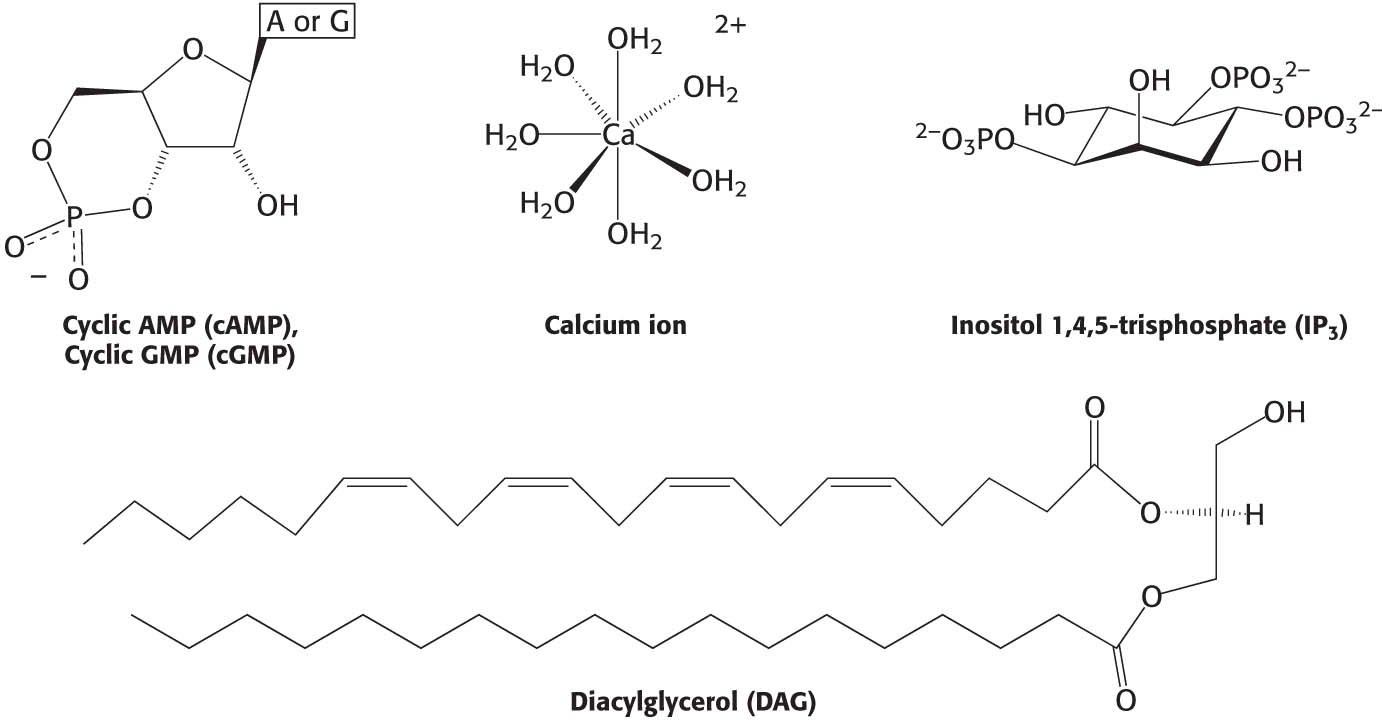
13.1 Signal Transduction Depends on Molecular Circuits
✓ 4 Identify the basic components of all signal-

Signal-
Release of the Primary Messenger. A stimulus such as a wound or a digested meal triggers the release of the signal molecule, also called the primary messenger.
Reception of the Primary Messenger. Most signal molecules are too large and too polar to pass through the cell membrane or through transporters. Thus, the information presented by signal molecules must be transmitted across the cell membrane without the molecules themselves entering the cell. Membrane receptors transfer information from the environment to a cell’s interior. Such receptors are integral membrane proteins that have both extracellular and intracellular domains. A binding site on the extracellular domain specifically recognizes the signal molecule (often referred to as the ligand). The formation of the receptor–
ligand complex alters the tertiary or quaternary structure of the receptor, including the intracellular domain. However, structural changes in the few receptors that are bound to ligands are not sufficient to yield a response from the cell. The information conveyed by the receptor must be transduced into other forms of information that can alter the biochemistry of the cell. Relay of Information by the Second Messenger. Structural changes in receptors lead to changes in the concentration of small molecules, called second messengers, that are used to relay information from the receptor–
ligand complex. Particularly prominent second messengers include cyclic AMP (cAMP, or cyclic adenosine monophosphate) and cyclic GMP (cGMP, or cyclic guanosine monophosphate), calcium ion, inositol 1,4,5- trisphosphate (IP3), and diacylglycerol (DAG; Figure 13.2).  Figure 13.2 Common second messengers. Second messengers are intracellular molecules that change in concentration in response to environmental signals. That change in concentration conveys information inside the cell.
Figure 13.2 Common second messengers. Second messengers are intracellular molecules that change in concentration in response to environmental signals. That change in concentration conveys information inside the cell.The use of second messengers has several consequences. One consequence is that second messengers are often free to diffuse to other compartments of the cell, such as the nucleus, where they can influence gene expression and other processes. Another consequence is that the signal may be amplified significantly in the generation of second messengers. Each activated receptor–
ligand complex can lead to the generation of many second messengers within the cell. Thus, a low concentration of signal molecules in the environment, even as little as a single molecule, can yield a large intracellular signal and response. Activation of Effectors That Directly Alter the Physiological Response. The ultimate effect of the signal pathway is to activate (or to inhibit) the pumps, enzymes, and gene-
transcription factors that directly control metabolic pathways, gene activation, and processes such as nerve transmission. Page 227Termination of the Signal. After a signaling process has been initiated and the information has been transduced to affect other cellular processes, the signaling process must be terminated. Without such termination, cells lose their responsiveness to new signals. Moreover, signaling processes that fail to be terminated properly may lead to uncontrolled cell growth and cancer.
Essentially every biochemical process presented in the rest of this book either is a component of a signal-